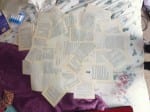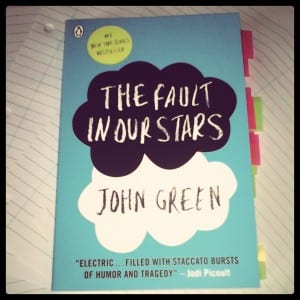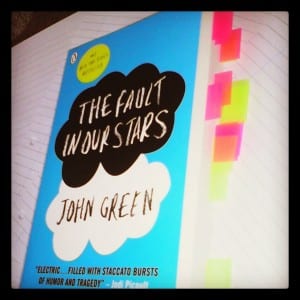A reader lives a thousand lives before he dies[…] The man who never reads lives only one.
Martin, George R.R. A Dance with Dragons.

A reader lives a thousand lives before he dies[…] The man who never reads lives only one.
Martin, George R.R. A Dance with Dragons.
Today I started experimenting with different methods of how I could create this mammoth book out of pages from pre-existing books.

This gallery contains 15 photos.
Just like every good book needs a redraft before publication, the structure of my performance piece is need of a redraft. Transitions within any performance -be it performance art or a fully fledged theatrical production- are vital as they weave different elements, ideas and scenes within the piece as a whole. For this performance idea to have a more structured feel in order for the audience to really experience the transition from ‘reality’ in the ‘imagination’, the physical structure of the piece has changed. Rather than involving the entire room, the performance space has now been separated:
As the diagram shows, the space will be divided into ‘reality’ and ‘imagination’. Stepping from one world to the other, showcasing what happens when you read; becoming immersed in a new world – a new space. Rather than remaining passive/stationary throughout the performance (as was in my previous performance concept), I plan to explore the space in the highlighted sections, just as one explores a book. Reading is different for each person, however, to be able to have something tangible, to touch the story you are reading would be any reader’s dream. As I walk around the space, lead by the narration and action of the story, I will encounter different props from the story and interact with them (all made from book pages, of course).
Choosing different sections for the performance is proving a challenging task. The book I have chosen to explore is The Fault in Our Stars (2012) by John Green. The difficulty has not arisen because the book it too two-dimensional or because the narrative has limited options of where it can go, but because the text is so rich of roller-coaster and contrasting moments. Choosing sections of the story which convey the important mile stones within the story, while offering contrasting moments is difficult because there are so many to choose from, and above is a potential short list of the sections I plan to use.
 |
 |
Choosing a novel/story which is contained within a 10 minute period, especially while read aloud, is near enough impossible – unless the book in question is a child’s book.
To create a world within 10 minutes from an existing book is hard. The 10 minute adapted story needs to be able to stand alone within its own merit, while still containing the through-line of the original story. So, although it won’t be as extensive as The Adventures of Wound Man and Shirley or the same length as an actual audio book, the atmosphere created should be more intimate and more immersive – with the world of story coming to life within the space. The atmosphere created by the sound and lighting in the performance space will become more rushed and intense as the performance progresses – mimicking the mental engulfment and obsession with a text whilst we are reading. Sounds and lights will both intensify in volume and speed allowing the story to inhabit the space in a more three dimensional manner and allowing the audience to really step into the world of the book without moving from their seats. It is this physical development of the space which restricts me to just one text. Before this idea developed I was going to use ipods/CD players to act as audio books to give the audience as a collective a different experience from one another by giving them the option to listen to different tales. However, with this idea the audience will be listening to one story as a collective, experiencing the space together, delving and falling deeper and deeper into this fabricated world. If the text chopped and changed between multiple texts, the essence of ‘falling’ into a text would be lost, as the establishing of the world would have to begin again with each new tale, thereby drawing the audience away from the world they had just been welcomed in to.
The idea to juxtapose the story with the space is overwhelming. Introducing a story meant for a child into a more mature space is an interesting idea, and one which I want to explore further.
When reading a child’s story you automatically become more animated -both physically and vocally- to ensure the child stays attentive and understands what is happening. If the same story were to be told to adults, would the animation cease? Would it be important for the expression to lose excitement? If The Gruffalo were to be told to a group of adults in a more sombre tone, would it change the message of the story?
These are questions which I think need exploring and working through. Especially when placed within a more mature environment.
Works Cited
MagicLightPictures (2011) The Gruffalo – Official Trailer, dir. Jakob Schuh and Max Lang, Online: https://www.youtube.com/watch?v=cVkj4McR1Fo (accessed 13 March 2014).